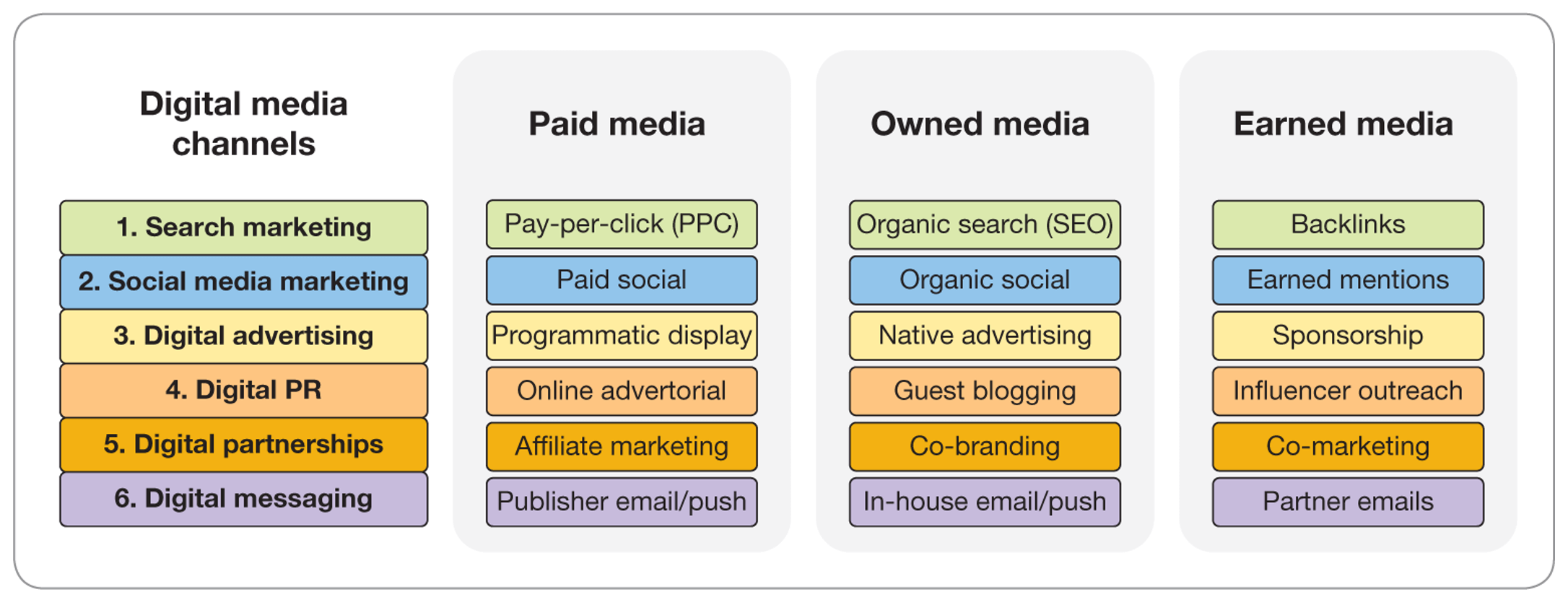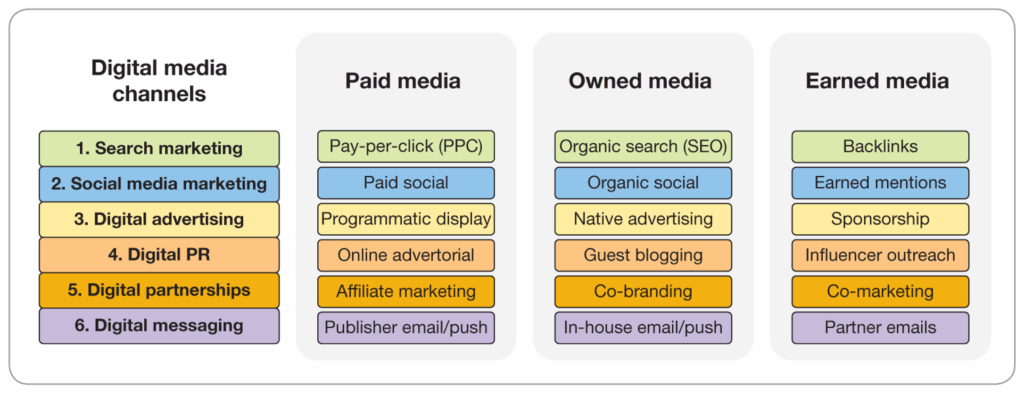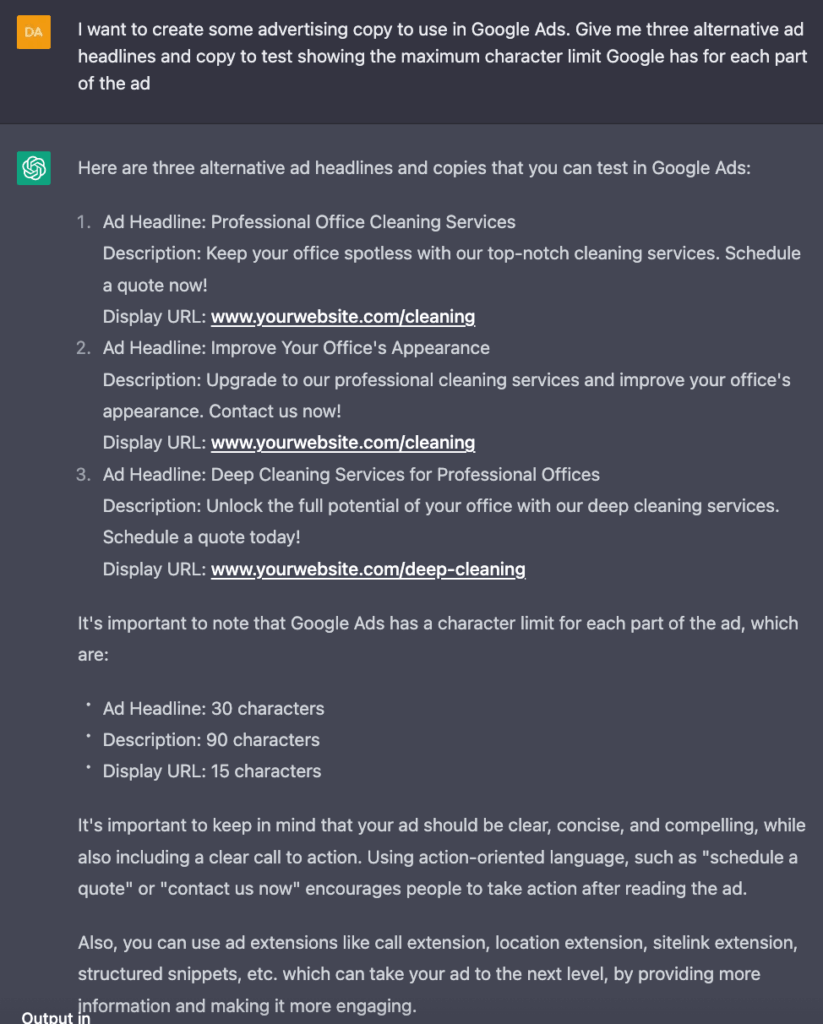Welcome to AskByteWise.com! I’m Noah Evans, and if you’re looking to supercharge your marketing efforts without spending countless hours, you’re in the right place. In today’s fast-paced digital world, 15 Powerful ChatGPT Prompts to Automate Your Marketing Tasks can be the game-changer you need. Whether you’re a small business owner, a marketing student, or just curious about leveraging AI, this guide will unlock the secrets to making your marketing smarter, not harder, by showing you exactly how to wield ChatGPT as your ultimate digital assistant. Get ready to transform your workflow and boost your productivity!
What is ChatGPT and Why It Matters for Marketing Automation?
Imagine having a super-smart assistant who can brainstorm ideas, write compelling copy, summarize research, and even help you plan your content calendar – all within seconds. That’s essentially what ChatGPT is. At its core, ChatGPT is a large language model developed by OpenAI, trained on a massive amount of text data from the internet. Think of it as a digital brain that can understand, generate, and process human-like text based on the instructions you give it.
For marketers, especially those without a dedicated team, this is revolutionary. Marketing automation isn’t just about scheduling posts; it’s about streamlining repetitive, time-consuming tasks so you can focus on strategy, creativity, and connecting with your audience. ChatGPT acts like that super-smart intern, handling the heavy lifting of content creation, research, and analysis, freeing you up to innovate. From drafting email campaigns to generating social media captions, these 15 Powerful ChatGPT Prompts to Automate Your Marketing Tasks are designed to significantly boost your efficiency and output.
The Art of Prompt Engineering: Talking to Your AI Assistant
Before we dive into the prompts, let’s talk about prompt engineering. This isn’t some complex coding skill; it’s simply the art of crafting clear, effective instructions for ChatGPT. Think of it like giving directions to a very intelligent, but literal, personal assistant. The better your directions, the better the outcome.
Here’s how to become a prompt master:
- Be Clear and Specific: Avoid vague language. Instead of “Write marketing copy,” try “Write a compelling social media post for Instagram about our new eco-friendly water bottle.”
- Provide Context: Tell ChatGPT who it’s talking to (your target audience), what your brand’s voice is (friendly, authoritative, witty), and what the goal is (drive sales, increase engagement).
- Define the Persona: You can ask ChatGPT to “Act as an experienced SEO specialist” or “Generate content as a playful brand ambassador.” This helps tailor the output.
- Specify Format and Length: Do you need bullet points? A short paragraph? A 500-word blog outline? Tell it exactly how you want the information presented.
- Iterate and Refine: Don’t be afraid to ask follow-up questions or refine your prompt. If the first output isn’t quite right, tell ChatGPT what you want changed: “Make it more concise,” “Add a call to action,” or “Focus on the benefits for small businesses.”
Noah’s Tip: “The more context and detail you provide in your prompt, the more tailored and effective ChatGPT’s response will be. Think of it as a conversation; the better you articulate your needs, the better your assistant can help.”
15 Powerful ChatGPT Prompts to Automate Your Marketing Tasks
Now, let’s get down to business! Here are 15 carefully crafted ChatGPT prompts designed to help you automate various aspects of your marketing, saving you time and boosting your creative output.
1. Generating a Month’s Worth of Content Ideas
Staring at a blank content calendar? ChatGPT can be your ultimate brainstorming partner.
The Prompt:
“Act as a content strategist for a [industry/niche, e.g., sustainable fashion brand]. Generate 20 unique content ideas for blog posts, social media, and email newsletters for the next month. Focus on [target audience, e.g., eco-conscious millennials] and incorporate themes like [theme 1, e.g., ethical sourcing], [theme 2, e.g., wardrobe longevity], and [theme 3, e.g., minimalist style]. Include a mix of educational, inspirational, and promotional content.”
Why it’s powerful: This prompt gives you a head start on your content planning, ensuring a diverse range of topics aligned with your brand and audience.
2. Creating a Detailed Blog Post Outline
Once you have an idea, structuring a blog post can still take time. Let ChatGPT lay the groundwork.
The Prompt:
“I need a detailed outline for a blog post titled ‘[Blog Post Title, e.g., The Ultimate Guide to Composting at Home]’. The target audience is [target audience, e.g., first-time gardeners], and the goal is to [goal, e.g., educate and encourage them to start composting]. Include an introduction, 3-5 main sections with sub-points, and a conclusion with a clear call to action. Ensure the tone is [tone, e.g., friendly and informative] and incorporates SEO best practices for the keyword ‘[primary keyword, e.g., home composting]’.”
Why it’s powerful: This streamlines the research and organization phase, giving you a solid framework to write from, ensuring all key points are covered.
3. Crafting Engaging Social Media Captions
Social media demands fresh, engaging content constantly. ChatGPT can help you keep up.
The Prompt:
“Draft 5 unique social media captions for Instagram, Facebook, and LinkedIn for our new [product/service, e.g., online course on digital marketing for beginners]. Each caption should be tailored to the platform’s best practices (e.g., emojis for Instagram, professional tone for LinkedIn). Include relevant hashtags, a call to action to ‘[CTA, e.g., enroll now link in bio]’, and reflect our [brand voice, e.g., encouraging and expert] tone.”
Why it’s powerful: Saves immense time across different platforms, ensuring your message is optimized for each audience.
4. Generating High-Converting Email Subject Lines
A good subject line is crucial for open rates. Let ChatGPT brainstorm attention-grabbing options.
The Prompt:
“Generate 10 compelling and concise email subject lines for an upcoming [type of email, e.g., Black Friday sales announcement]. The email’s goal is to [goal, e.g., drive traffic to our sales page]. Focus on urgency, value, and curiosity. Include subject lines under 50 characters, and some using emojis.”
Why it’s powerful: Quickly provides a variety of options to test, helping you improve email campaign performance.
5. Writing Persuasive Ad Copy (Google Ads/Facebook Ads)
Crafting effective ad copy that converts is an art. ChatGPT can give you a strong starting point.
The Prompt:
“Write 3 variations of short-form ad copy for a [platform, e.g., Google Search Ad] promoting our [product/service, e.g., organic meal delivery service]. The ad should target [target audience, e.g., busy professionals], highlight benefits like [benefit 1, e.g., time-saving], [benefit 2, e.g., healthy eating], and include a clear call to action to ‘[CTA, e.g., Order Now]’. Keep character limits in mind for headlines and descriptions.”
Why it’s powerful: Accelerates the ad creation process, allowing you to test different angles and appeals quickly.
6. Initial SEO Keyword Research & Cluster Ideas
While not a full SEO tool, ChatGPT can provide excellent starting points for keyword research.
The Prompt:
“Act as an SEO specialist. Generate 15 long-tail keyword ideas related to ‘[broad topic, e.g., sustainable living]’ that a beginner blog might target. Also, group these into 3-4 content clusters, suggesting a main topic for each cluster and 3-4 supporting sub-topics.”
Why it’s powerful: Helps in mapping out content strategies around specific topics and ensures you’re targeting relevant search queries.
7. Creating Engaging Product Descriptions
Highlighting your product’s best features in a compelling way is key to sales.
The Prompt:
“Write 3 distinct product descriptions for our new ‘[product name, e.g., Smart Home Security Camera]’. One description should be technical, one benefit-focused, and one lifestyle-oriented. Highlight key features like [feature 1, e.g., 4K video], [feature 2, e.g., motion detection], and [feature 3, e.g., two-way audio]. Target [target audience, e.g., homeowners concerned about security].”
Why it’s powerful: Provides diverse angles for your product copy, catering to different buyer personas and increasing appeal.
8. Drafting Customer Testimonial Request Emails
Getting testimonials can be tough. ChatGPT can draft a polite and effective request.
The Prompt:
“Draft a friendly and professional email requesting a testimonial from a satisfied customer for our [product/service, e.g., graphic design services]. Explain why their feedback is important, suggest what they might include (e.g., how it solved a problem for them), and provide a clear, easy way for them to submit it. Offer a small incentive like [incentive, e.g., a 10% discount on their next project].”
Why it’s powerful: Automates a crucial part of building social proof, making it easier to collect valuable customer feedback.
9. Generating a Comprehensive FAQ Section
Anticipating customer questions saves support time and builds trust.
The Prompt:
“Create a comprehensive FAQ section for our new ‘[product/service, e.g., online meditation app]’. Predict the top 10 questions users might have about [app features, pricing, subscription, technical issues, benefits, etc.] and provide concise, helpful answers. Organize them logically under relevant headings.”
Why it’s powerful: Provides immediate answers to common queries, improving user experience and reducing customer service load.
10. Summarizing Market Research Reports
Need to quickly grasp the key takeaways from a lengthy report? ChatGPT can condense information.
The Prompt:
“Summarize the key findings, conclusions, and actionable insights from the following market research report on [topic, e.g., the rise of plant-based protein alternatives]. Focus on data relevant to a [type of business, e.g., food startup] looking to enter this market. [Paste the text of the report or key sections here, or provide a link if ChatGPT can access it].”
Why it’s powerful: Drastically cuts down on research time, helping you make informed marketing decisions faster.
11. Outlining a Webinar or Presentation
Planning a webinar or presentation can be daunting. Let ChatGPT structure your talking points.
The Prompt:
“Generate a detailed outline for a 45-minute webinar titled ‘[Webinar Title, e.g., Mastering Social Media for Small Businesses in 2024]’. The target audience is [target audience, e.g., small business owners with limited marketing budgets]. Include an introduction, 3-4 main sections with key takeaways, practical tips, a Q&A segment, and a strong call to action to [CTA, e.g., download our free guide]. Suggest engaging visuals for each section.”
Why it’s powerful: Helps you organize your thoughts and ensure a logical, engaging flow for your presentations.
12. Brainstorming Video Script Ideas
Video content is essential. ChatGPT can help you develop compelling scripts.
The Prompt:
“Brainstorm 5 unique video script ideas for a [platform, e.g., YouTube channel] focused on [topic, e.g., DIY home renovations]. Each idea should include a hook, main points, and a clear call to action to [CTA, e.g., subscribe to our channel]. Aim for videos around 5-7 minutes long, targeting [target audience, e.g., homeowners looking for budget-friendly upgrades].”
Why it’s powerful: Quickly generates a range of creative video concepts, helping you stay ahead with your video marketing.
13. Drafting a Simple Press Release
Need to announce something important? ChatGPT can help you structure a professional press release.
The Prompt:
“Draft a concise press release announcing the launch of our new ‘[product/service, e.g., AI-powered customer support chatbot]’. Include a compelling headline, the date, a brief summary of the launch, details about the product’s benefits for [target audience, e.g., e-commerce businesses], a quote from our [Spokesperson Title, e.g., CEO], and contact information. Ensure a professional and newsworthy tone.”
Why it’s powerful: Streamlines the process of communicating important news to media and stakeholders.
14. Generating Catchy Headlines and Slogans
Headlines and slogans are often the first impression. ChatGPT can generate many options.
The Prompt:
“Generate 20 catchy and memorable headlines and slogans for a new [type of business/product, e.g., sustainable coffee brand]. Focus on our [brand values, e.g., ethical sourcing, great taste, community impact]. Include options that are short, witty, and benefit-driven. Target [target audience, e.g., conscious consumers aged 25-45].”
Why it’s powerful: Provides a broad range of options for branding, campaigns, and content, helping you find that perfect hook.
15. Gaining Competitor Analysis Insights
Understanding your competition is vital. ChatGPT can help summarize their strategies.
The Prompt:
“Analyze the marketing strategy of ‘[Competitor Company Name, e.g., ‘EcoChic Organics’]’. Based on public information (website, social media, news), identify their key target audience, main marketing channels, unique selling propositions (USPs), and their apparent content themes. What are their strengths and weaknesses in their marketing efforts? Present this as a bulleted summary.”
Why it’s powerful: Offers a quick overview of competitor strategies, informing your own marketing decisions and identifying opportunities.
Best Practices for Using ChatGPT in Your Marketing Workflow
While these 15 Powerful ChatGPT Prompts to Automate Your Marketing Tasks are incredibly helpful, remember that AI is a tool, not a replacement for human creativity and judgment. Here are some best practices to get the most out of it:
- Always Review and Edit: ChatGPT’s output is a draft. Always proofread for accuracy, tone, grammar, and factual correctness. AI can sometimes “hallucinate” or provide outdated information.
- Maintain Your Brand Voice: Use ChatGPT to generate content, but always infuse your unique brand voice and personality. You might need to refine its output to sound exactly like your brand.
- Iterate and Refine: Don’t settle for the first answer. If something isn’t quite right, tell ChatGPT. Ask it to “make it more engaging,” “shorten it,” “add more humor,” or “target this specific demographic.”
- Fact-Check Everything: Especially when dealing with statistics, product specifications, or claims, always double-check any information provided by ChatGPT.
- Combine AI with Human Insight: Use ChatGPT to generate ideas and drafts, but let your human expertise guide the strategy, ensure emotional resonance, and add the nuanced touch that only a human can provide.
- Ethical Use: Be transparent if you’re using AI for content generation, especially in sensitive areas. Ensure your content remains helpful, original, and doesn’t mislead your audience.
Beyond the 15 Powerful ChatGPT Prompts: Future of AI in Marketing
The prompts we’ve covered today are just the tip of the iceberg. The integration of AI, like ChatGPT, into marketing is constantly evolving. We’re seeing AI tools becoming more sophisticated, capable of not only generating text but also analyzing vast datasets for customer insights, predicting trends, personalizing content at scale, and even optimizing ad spend in real-time.
Future advancements will likely lead to even more seamless integration with marketing platforms, allowing AI to handle complex campaign management, A/B testing, and audience segmentation with minimal human intervention. For small businesses and beginners, this means even greater accessibility to powerful marketing tools that were once exclusive to large corporations. The key is to stay curious, keep experimenting, and continue learning how to effectively prompt these powerful AI assistants.
Conclusion
Harnessing the power of these 15 Powerful ChatGPT Prompts to Automate Your Marketing Tasks is more than just a productivity hack; it’s a strategic move that empowers you to achieve more with less. By delegating repetitive content generation, brainstorming, and research tasks to ChatGPT, you free up invaluable time to focus on what truly matters: connecting with your audience, refining your strategy, and growing your business.
Remember, AI is your partner. With clear instructions and a bit of creativity, you can transform your marketing efforts, making them more efficient, more impactful, and genuinely enjoyable. So, go ahead, experiment with these prompts, and unlock a new era of marketing automation for your brand!
Frequently Asked Questions (FAQ)
Q1: Is ChatGPT free to use for marketing tasks?
A1: OpenAI offers a free version of ChatGPT that is highly capable for many marketing tasks. They also offer paid tiers (ChatGPT Plus and API access) that provide faster responses, access to more advanced models (like GPT-4), and higher usage limits, which can be beneficial for intensive marketing workflows.
Q2: Can ChatGPT replace a human marketing team?
A2: No, ChatGPT is a powerful tool designed to assist and augment human capabilities, not replace them. It excels at generating drafts, brainstorming ideas, and automating repetitive tasks, but it lacks the critical thinking, emotional intelligence, strategic insight, and ethical judgment of human marketers. The best results come from combining AI’s efficiency with human creativity and oversight.
Q3: How do I ensure ChatGPT’s output matches my brand’s voice?
A3: To ensure brand voice consistency, explicitly include your brand’s tone and style in your prompts. For example, “Write in a friendly, witty, and slightly rebellious tone.” You can also provide examples of your past content and ask ChatGPT to mimic that style. Always review and edit the output to fine-tune it to your brand’s exact voice.
Q4: Are there any ethical concerns when using ChatGPT for marketing?
A4: Yes, ethical considerations are important. Ensure that any information generated by ChatGPT is factually accurate and doesn’t mislead your audience. Be transparent if your content is AI-generated, especially in sensitive contexts. Avoid using AI to create spammy or deceptive content, and always prioritize genuine helpfulness and value for your audience.
Q5: Can ChatGPT integrate with my existing marketing tools?
A5: Directly, ChatGPT is a text-based interface. However, its underlying technology (OpenAI’s API) can be integrated into various marketing automation platforms, content management systems, and other tools by developers. This allows for seamless automation and embedding of AI capabilities within existing workflows. For non-technical users, copy-pasting between ChatGPT and your tools is a common and effective method.
See more: 15 Powerful ChatGPT Prompts to Automate Your Marketing Tasks.
Discover: AskByteWise.


